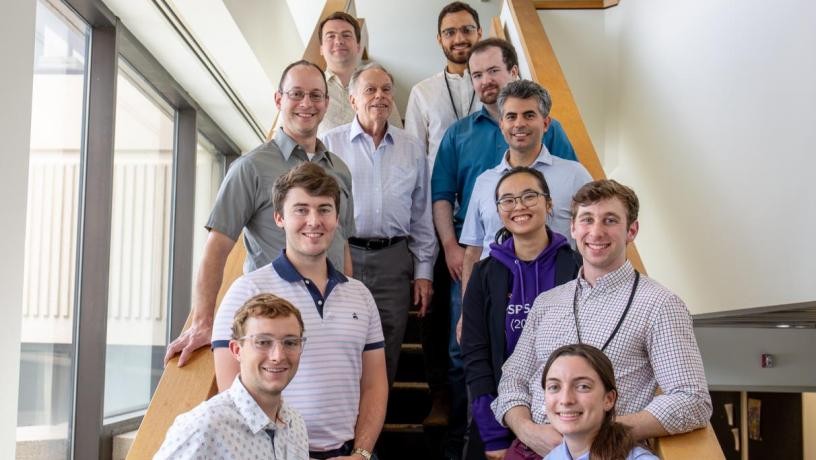15 faculty, scientists and students presented research at Princeton Plasma Physics Laboratory July 19-21.

From July 19-21, fifteen Columbia University students, scientists and faculty attended and presented research at the 2023 Theory and Simulation of Disruptions Workshop at Princeton Plasma Physics Laboratory. The workshop takes place semi-annually with the goal of addressing disruptions, large-scale instabilities within fusion devices that can result in a loss of plasma control and cause damage to plasma-facing components. This year, Columbia professor Carlos Paz-Soldan (Professor of Applied Physics) served on the organizing committee and chaired a session on wall currents, tearing modes and mitigation.
Several students, scientists and faculty also presented invited talks:
Allen Boozer (Professor of Applied Physics) presented an invited lecture titled “The asymmetry between magnetic surface breakup and reformation,” detailing theoretical aspects of the crossing and “breaking” of magnetic field lines into mutually-repulsive geometries as a result of large-scale instabilities. Magnetic surface breakup and reformation can transfer a plasma’s magnetic energy to its component particles, enhancing harmful disruptions.
Steven Sabbagh (Applied Physics Adjunct Professor & Senior Research Scientist) presented an invited lecture titled “First real-time application of disruption event characterization and forecasting and associated research,” providing an overview of the Disruption Event Characterization and Forecasting (DECAF) toolkit, which uses physics-based models to predict tokamak disruption events using a compendium of past data with up to 100% prediction accuracy for a given year’s worth of shots on some tokamak fusion devices.
Veronika Zamkovska (Applied Physics Research Scientist) also presented an invited lecture involving DECAF, titled “Cross-device DECAF investigation of abnormal evolution of plasma vertical position and current indicating disruptions and internal reconnection events.” Zamkovska’s lecture focused on the ways in which a specific set of plasma characteristics (vertical position within the tokamak, and current) can be used as warning signs of a possible disruption or magnetic reconnection event.
William Boyes (Applied Physics doctoral student) presented an invited lecture, “MHD stability and scenario development of negative triangularity plasmas in DIII-D,” on the properties of negative triangularity (inverted-D shaped) plasmas, whose viability as a possible reactor solution has grown in recent years as their stability and confinement benefits have become better understood.
Chris Hansen (Applied Physics Research Scientist) presented an invited lecture titled “Design of passive and structural conductors for tokamaks using thin-wall eddy current modeling,” detailing computer models of disruption-induced eddy currents in components of tokamak devices meant to serve structural purposes. Such models can in turn be used to improve the design of these components.
The following students also presented posters at the workshop’s poster session:
David Arnold (Applied Physics doctoral student): NIMROD validation studies on the HBT-EP tokamak
Anson Braun (Applied Physics doctoral student): Runaway electron mitigation coil design and predictions for the HBT-EP tokamak
Hari Pal Choudhury (Applied Physics doctoral student): The effects of electron cyclotron heating on quiescent relativistic electron plasmas in DIII-D
Juan Riquezes (Applied Physics doctoral student): Cross-machine comparison of born-rotating mode locking forecaster developed for real-time implementation
Lucia Rondini (Physics undergraduate student): Verifying improved particle trapping in negative triangularity plasmas
Matthew Tobin (Applied Physics doctoral student): Operational space assessment of vertical controllability and predictive capability of a vertical stability metric for disruption avoidance in tokamak plasmas